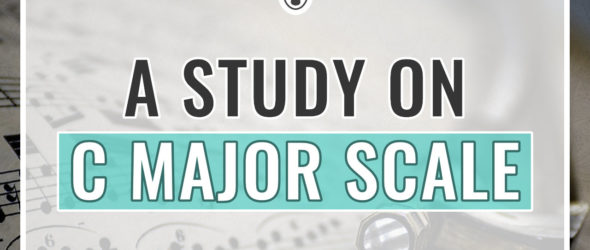One of the most commonly used scales on a violin is the C Major scale. Let’s learn today this scale and arpeggio!
Here you can download a free C Major booklet:
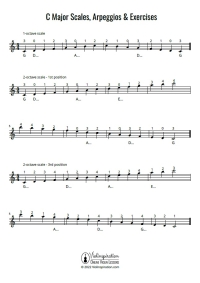
C Major Scales, Arpeggios
and a Bonus Exercise
What Are the Notes of the C Major Scale on the Violin?
The notes of the C Major scale are C, D, E, F, G, A, and B. In this scale played in the first position, a low second finger is used on D, A, and E strings, and an extended fourth finger on the E string.
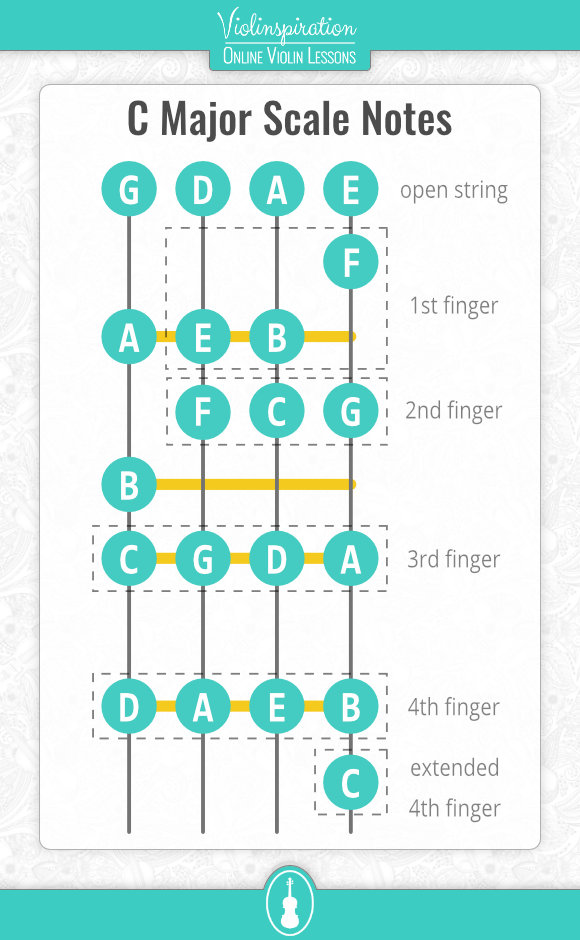
| 1st note | Tonic | C |
| 2nd note | Supertonic | D |
| 3rd note | Mediant | E |
| 4th note | Subdominant | F |
| 5th note | Dominant | G |
| 6th note | Submediant | A |
| 7th note | Leading Tone | B |
| 8th note | Tonic | C |
How Do You Play the C Major Scale on the Violin?
The one-octave C Major scale on the violin starts with the third finger on the G string. Next comes the fourth finger (or open D string) followed by notes on the D string: E stopped with the index finger, a low second (F note), a regular third, and again the fourth finger or open A string. Lastly, play on the A string B note with your first finger and C with the low second finger.
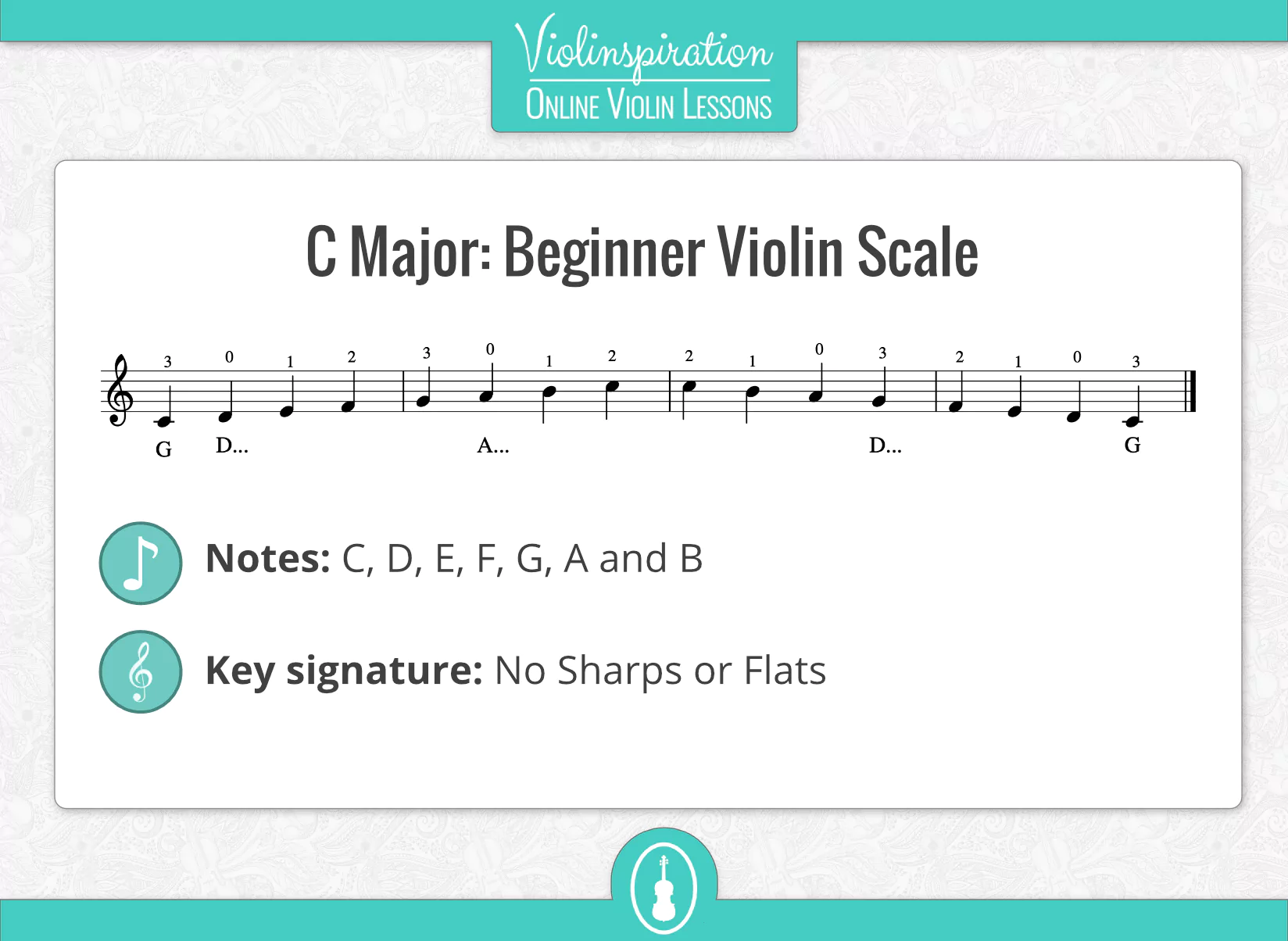
After playing the scale upwards, try playing it in reverse order.
In this video, I show how to play it:
How do You play a Two-Octave C Major Scale on the Violin?
C Major scale can be played on the violin in the first position with the use of the extended fourth finger or entirely in the third position.
Two-Octave C Major Scale in the First Position
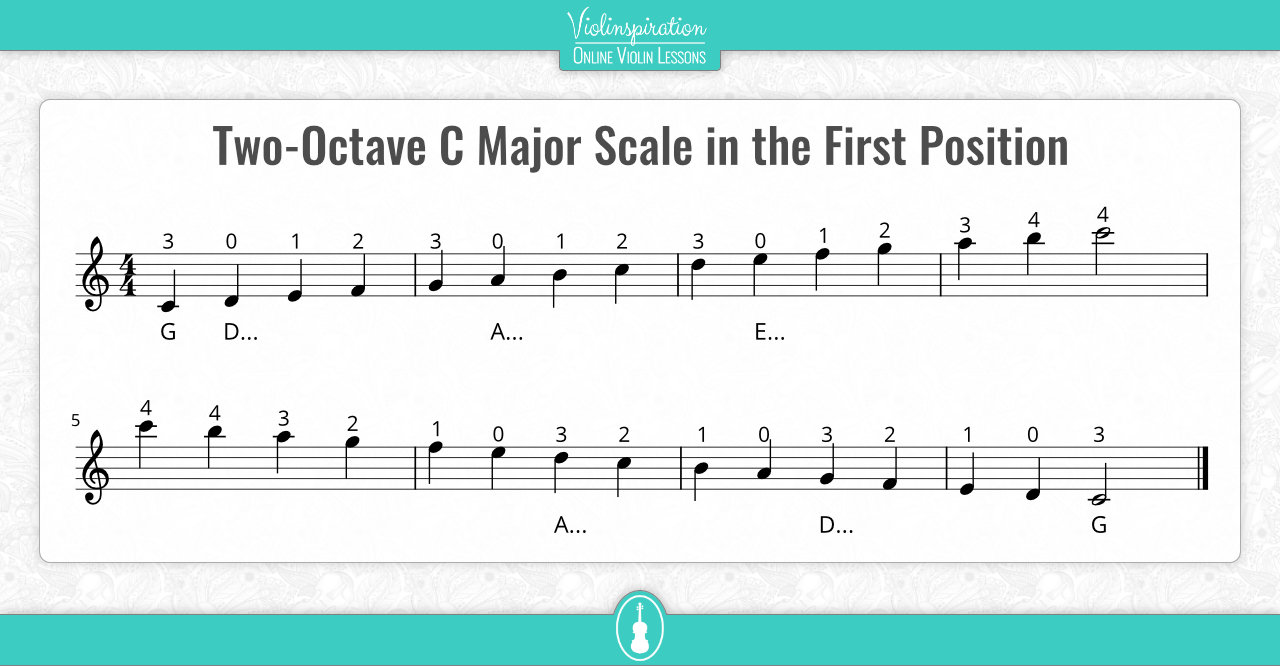
Start just as the one-octave scale and continue with the third finger on the A string, then stop the E note with the fourth finger or use the open E string. Remember to use on the E string the first and second fingers in the low position, the regular third and fourth fingers, and finish with the C note played with the extended fourth finger – so you have to play two notes with the pinky finger.
Two-Octave C Major Scale in the Third Position
If you’re ready to go higher up the fingerboard, play an entire 2-octave scale in the third position.
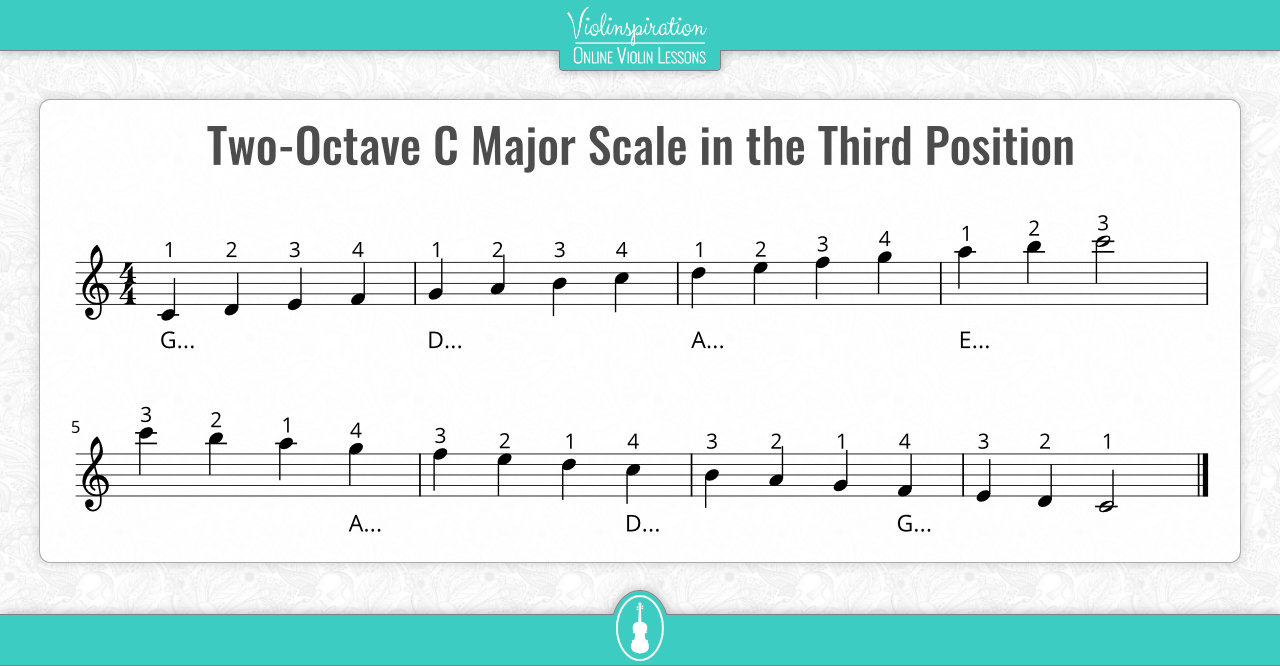
Three-Octave C Major Scale on the Violin
The three-octave C Major scale starts in the second position on the G string. On the A and E strings, you will have to shift to higher positions.
When practicing it, pay special attention to your intonation and smooth shifts without glissando.
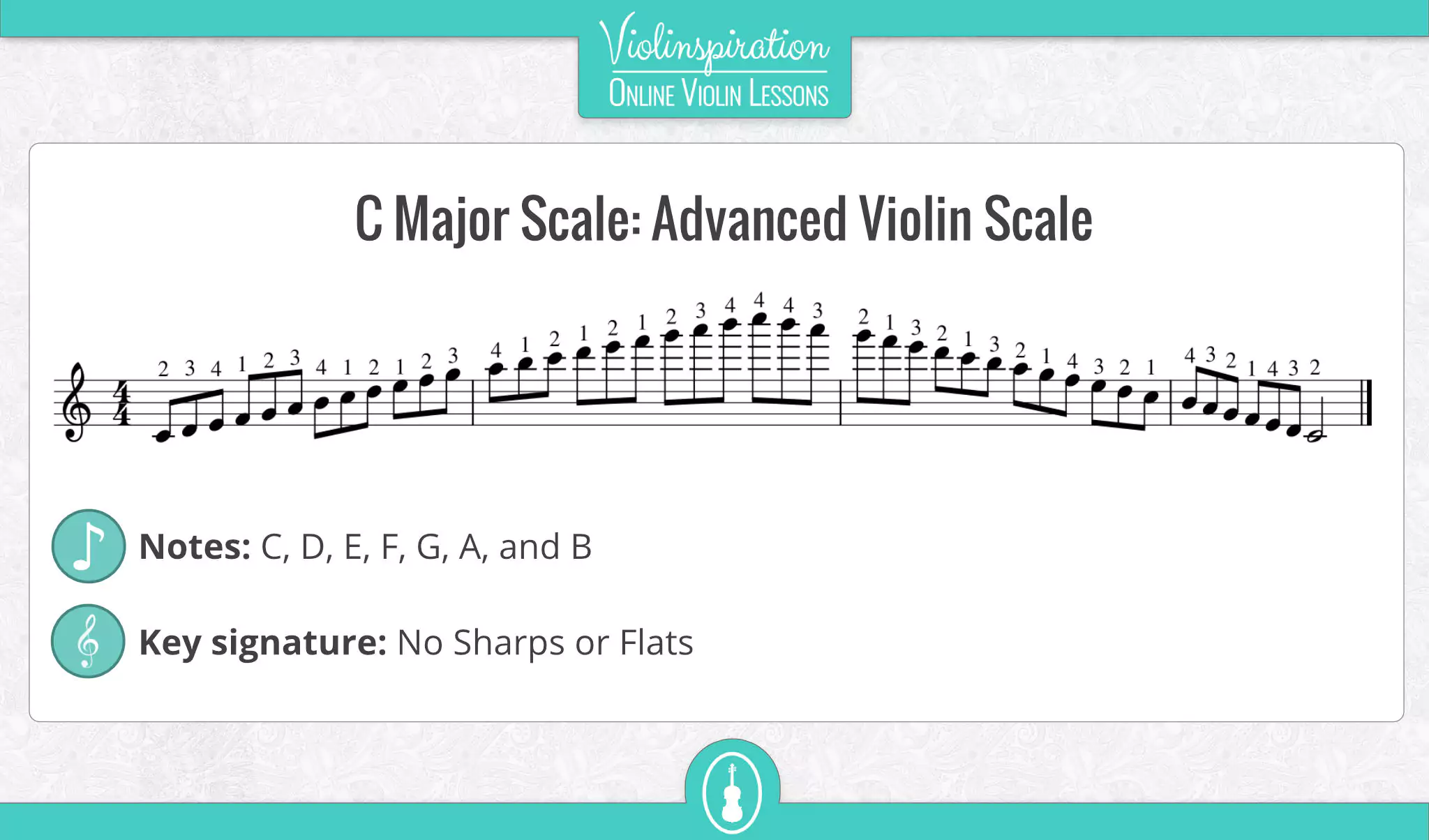
How Do You Play C Major Arpeggio on the Violin?
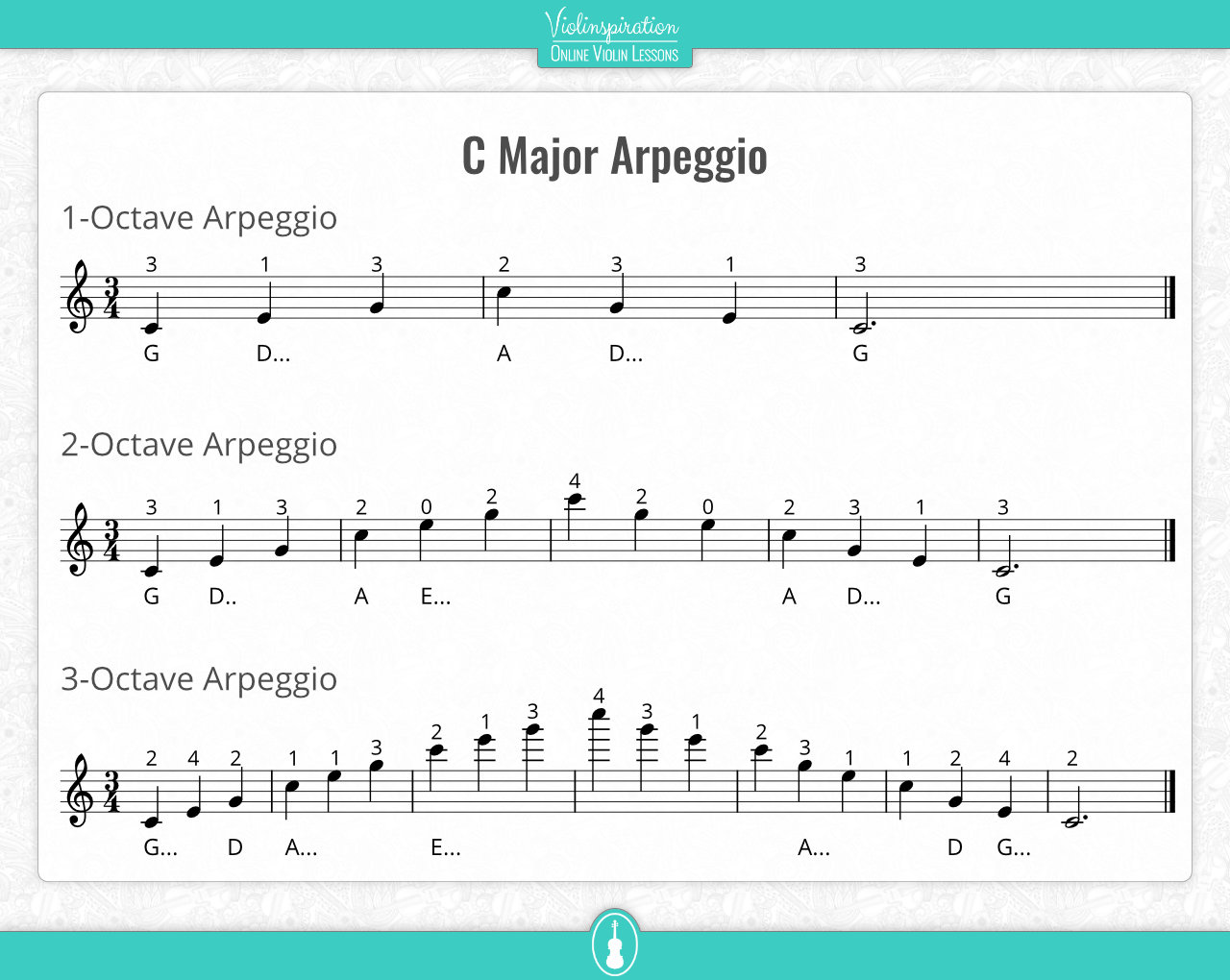
C Major arpeggio consists of the following notes: C, E, and G. To play the 1-octave arpeggio, start with the third finger on the G string, next stop the E note with your first finger and the G note with the third finger on the D string, and lastly stop the C note with your low second finger on the A string. Continue in descending order by playing G, E, and C.
You can also try out the 2-octave arpeggio, with the use of an extended fourth finger on the E string.
Sheet Music of the C Major Scale and Arpeggio
Download here a booklet with sheet music of C Major scales, arpeggios, and a bonus exercise to practice dynamics:

C Major Scales, Arpeggios
and a Bonus Exercise
How to Practice the C Major Scale?
1. Practice with a metronome
Set a metronome to a comfortable tempo and increase the tempo each time you feel you can speed up without decreasing the quality of your intonation.
2. Practice with an accompaniment
If you’re a member of Julia’s Violin Academy, try to get used to playing with an accompaniment by practicing a scale with it!
- Beginner level 2 – C Major Scale
- Beginner level 5 – C Major Scale with slurs
- Intermediate level 2 – C Major Scale – 2 octaves
3. Try different bowings
When you’re comfortable with playing the scale, try to use other bowings, like in this lesson: C Major Scale – 2 Octaves (JVA members only).
6 Well-known Pieces in C Major
Now, let’s listen to some audio & video examples of pieces in the key of C Major.
Wedding March by Felix Mendelssohn
Jakob Ludwig Felix Mendelssohn Bartholdy is most famous for the piece Wedding March from opus 61, which he composed for the play A Midsummer Night’s Dream by William Shakespeare. Here’s an orchestral version but most often you will have a chance to hear it played on a pipe organ in a church at the end of the wedding ceremony.
You can learn my easy arrangement of this piece on your violin, here’s the sheet music:
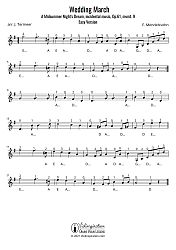
Wedding March by Mendelssohn
Free Violin Sheet Music
Rondo in C for Violin and Orchestra by W. A. Mozart
This piece from 1778 is one of the pieces that Mozart wrote for his friend the Italian virtuoso Antonio Brunetti.
A few years earlier, in 1776, Brunetti took the position in Count Hieronymus von Colloredo’s orchestra when Mozart resigned from it, and soon after, in 1777, Brunetti became the concertmaster.
Hallelujah by Leonard Cohen
A lovely piece written and originally sung by Leonard Cohen. It’s an ideal piece to learn for a beginner! Check out my post with tips on playing it and click the link below to get the sheet music for a small fee.

Violin Concerto in C by L. van Beethoven
Only a part of the original score of this concerto survived to our times, or maybe Beethoven didn’t finish it, so this piece was completed by others. That’s why you may find different versions of this violin concerto.
Fantasy in C Major for Violin and Piano by F. Schubert
Schubert’s Fantasy in C Major was his last piece for violin and piano. In the Andantino part, we can hear variations of his own song “Sei mir gegrüsst” composed a few years earlier.
G. Holst – Jupiter from The Planets Suite
The Planets Suite is a seven-movement piece composed for a large orchestra. Holst’s inspiration came from the astrological significance of the planets and horoscopes.
Mars – the Bringer of War, Venus – the Bringer of Peace, Mercury – the Winged Messenger, Jupiter – the Bringer of Jollity, Saturn – the Bringer of Old Age, Uranus – the Magician, and Neptune – the Mystic, is the complete list of movements. However, you will hear Mars and Jupiter the most often during a performance.
Conclusion
Playing scales is one of the steps to learning music faster. It gives you the opportunity to study the finger placement, focus on the tone, and try out different speeds or bowings – without the complex rhythm and difficult bowing that can appear in a piece.
I hope that this post along with the sheet music will help you advance in your violin playing!
Make sure to download the free booklet with exercises:

C Major Scales, Arpeggios
and a Bonus Exercise
Do you want even more resources? You can download a booklet with a set of scales for your level here:
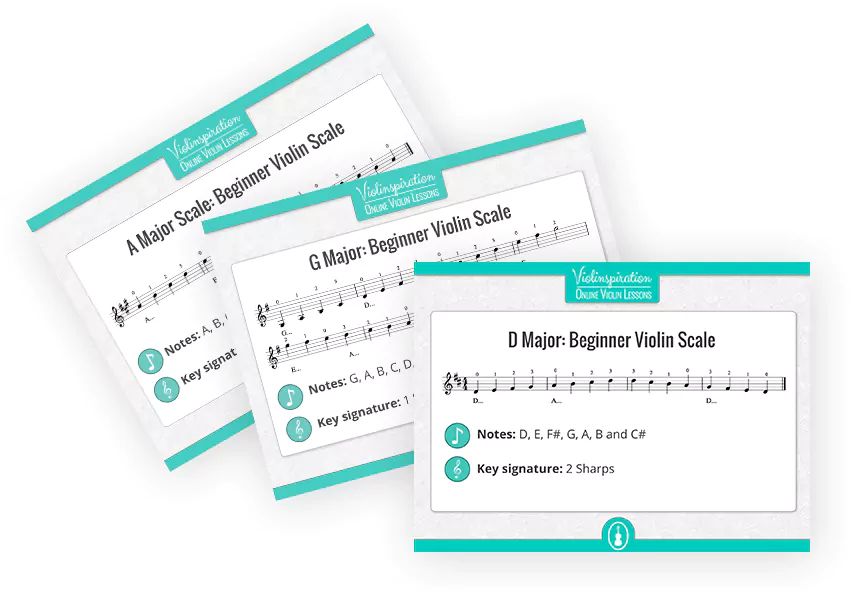
5 Most Common Violin Scales
for Beginners
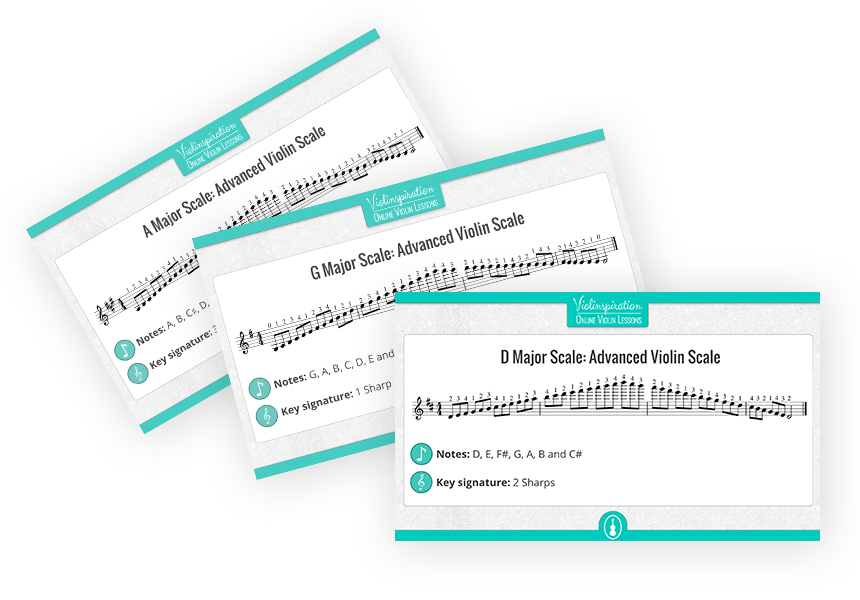
5 Most Common Violin Scales
for Advanced Player
